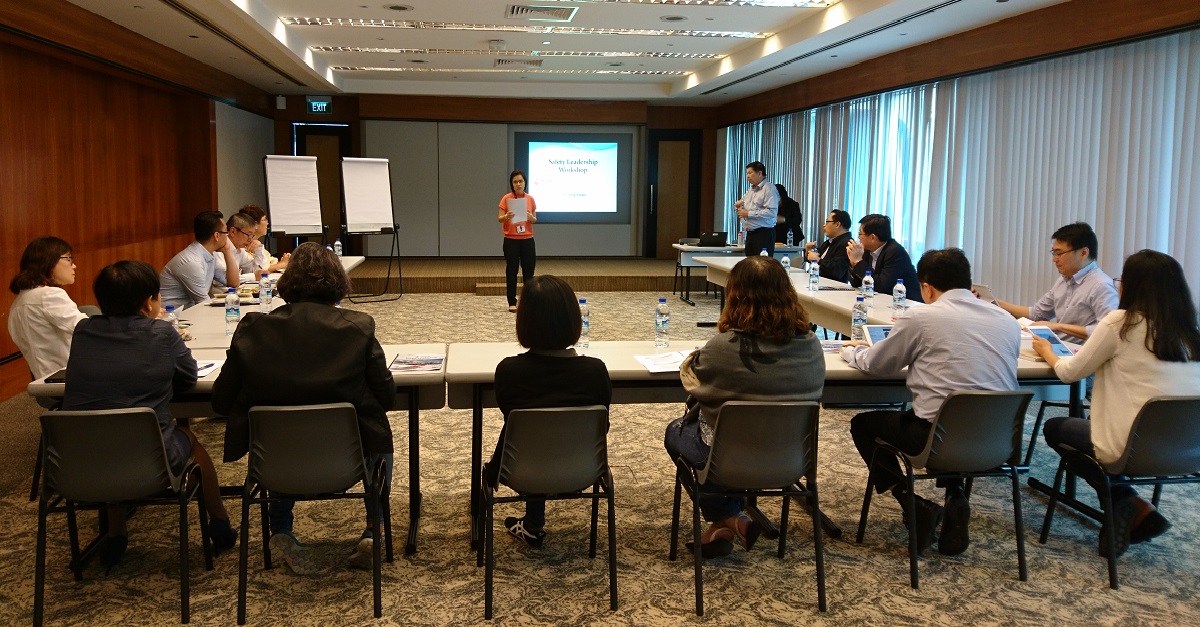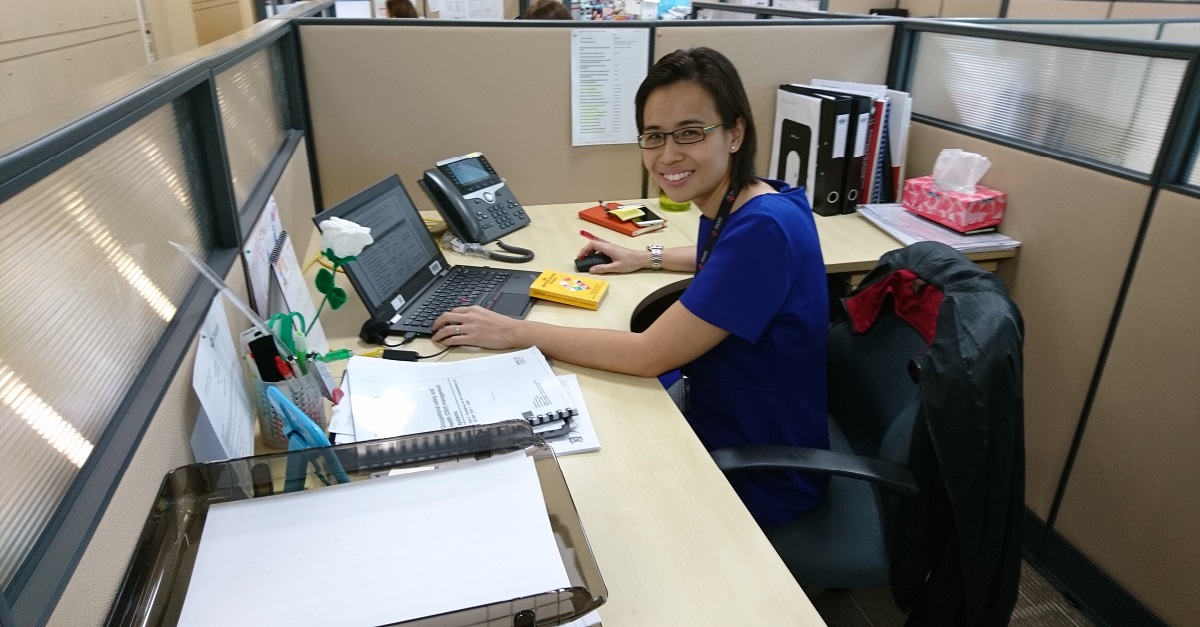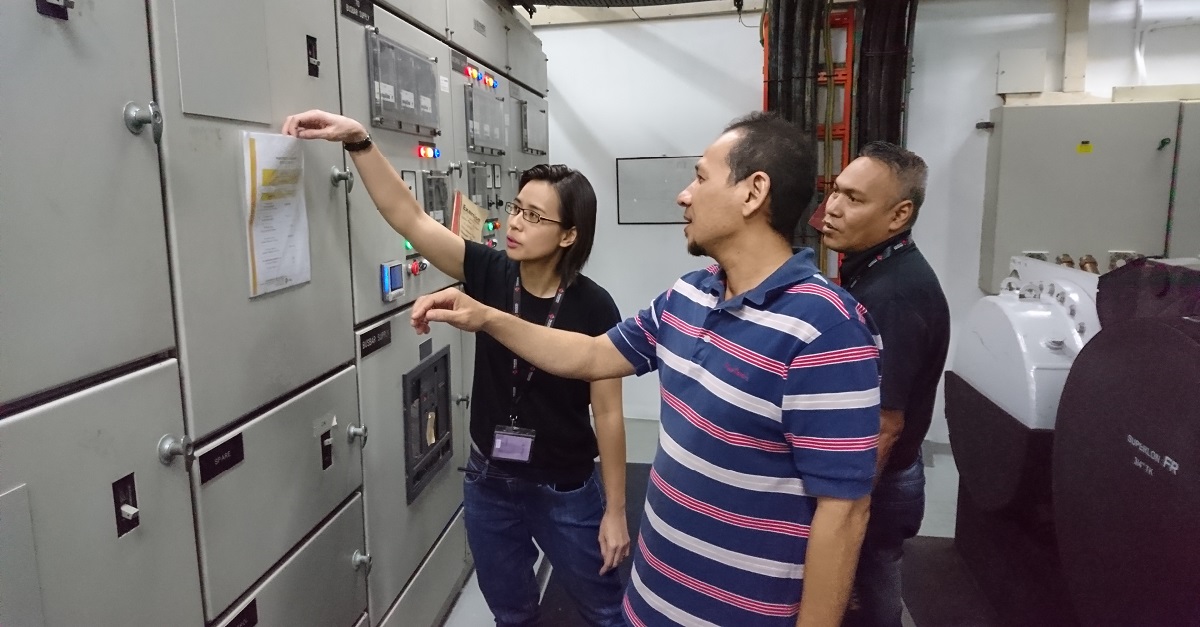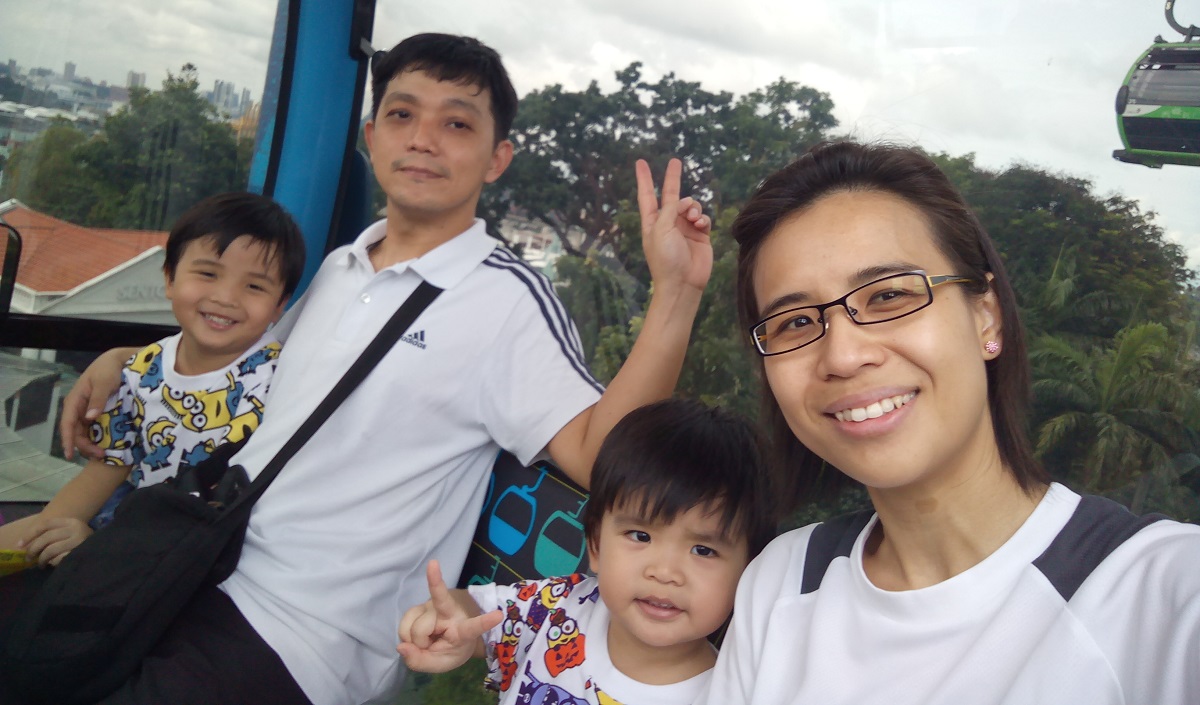30 Aug 2017
Safety as a Way of Life
“Safety should not be recognized as just a core value. Safety should be a way of life,” says Ritav Koh, Workplace Safety & Health Manager, Frasers Centrepoint Singapore. She shares with us her personal outlook on safety and how it feels working in a predominantly male industry.

Ritav, who has a rugged personality and fearless nature, followed in her father’s footsteps where she started her safety career in a male dominated industry.
Starting young
“A lot of people have asked me why I am called Ritav and not Rita. Naming has also been an integral part of the Asian culture in which the Chinese believe that a child’s name could determine his/her future. My grandfather gave me the name Ritav as he wanted me to be a unique individual who is able to tough it out. I believe the name has an endowment of a tenacious personality allowing me to push through obstacles and come out stronger.”
Ritav was the tomboy in her family and preferred playing with remote control cars instead of dolls. Her father saw the difference in his middle child and would often encourage her to help out with the more complex and challenging chores at home such as repairing leaking pipes. Growing up, Ritav looks up to her father as her role model and was guided by his ethos of “don’t be afraid to rough it out” and “what have you got to lose?”. Her rugged personality and fearless nature led her to follow in her father’s footsteps where she started her safety career in a male dominated industry.

Ritav, addressing Frasers Centrepoint Singapore’s senior management at a workshop held recently.
Today, having newly joined as Frasers Centrepoint Singapore’s Workplace Safety & Health Manager, Ritav, works closely with Centre Managers to implement and streamline safety measures across our retail and commercial properties.
My father, my inspiration
As a young girl, Ritav was always fascinated with the stories that her father shared. A yard superintendent at McDermott International Inc., he would bring her on board ships and tankers during family days and open houses which further piqued her interest in the maritime world. With the encouragement of her father, Ritav decided to make a career for herself in a similar industry when she started working in the shipyard when she was in her twenties.
“I faced many setbacks when I first started out. I was fortunate that my father kept me motivated by sharing his personal experience and offering me practical advice. A traditional man, my father was tough on me while growing up, always encouraging me to do my best. An inspiring mentor, he taught me to never give up no matter the difficulty.”

On days when she is not out for inspections, Ritav, is in the office checking her emails and preparing and updating reports.
Ritav was the first female Health, Safety and Environment officer at the shipyard, and the only lady in her team. Being a female in a male dominated industry a decade ago, was a challenge to break through the traditional mould and mindset and earn the trust and recognition from her bosses and colleagues. “I had to prove that I was as good as or even better than my male counterparts. I had to fight hard for my views and ideas to be heard.”
Implementation of the safety protocol was another hurdle as the shipyard workers came from diverse backgrounds and spoke in different languages so she had to be patient when communicating to the migrant workers. “I learnt that it was important to understand the ground challenges that these workers faced when adopting the safety culture, and the need to review and refine protocols to make the workplace a safer and healthier environment for everyone working in the shipyard.”
“Working at the shipyard aided in my growth personally and professionally. The lessons learnt and the skills I picked up helped to build a solid foundation for my career as a safety officer.” Ritav said that she was heartened to see many businesses and organisations embracing the importance of workplace safety in recent years, like Frasers Centrepoint Singapore.
Sharing on the paramount of safety in the workplace, Ritav pointed out that individuals should not simply view safety initiatives as a cumbersome effort that the company implements for audit purposes. “Every employee, including myself need to internalise these safety efforts and decipher what these messages means for us as individuals. After all, all of us work for a reason, one of which is to take care of our families, so why should we put ourselves at risk? As a commercial entity, it is also important that our patrons are housed in a safe environment.”
Armed with her strong beliefs, Ritav acknowledges that the challenge to implement safety protocols may require having to change the mindsets of the people she works with. “Throughout my experience working in the various industries, it is natural that older staff who were around my father’s age were less willing to heed advice from someone younger regarding the processes that they are accustomed to.” Ritav said that the long process would start from having an open and honest communication with her counterparts during the development phase.
A safe environment for all
“My current role at Frasers Centrepoint Singapore is to streamline health and safety processes, and form a Safety Steering Committee and Working Committee. I will also roll out adequate training to ensure all our staff recognise and understand standard safety and auditing terms used in the workplace.” As part of her job, Ritav also conducts inspections at various Frasers Centrepoint Singapore properties.
When it comes to adhering to safety rules, Ritav believes that it is important to share the rationale behind such guidelines. “Many workers follow safety protocols because “it is the law” or “they were told to do so”. I therefore take it upon myself to change such attitudes.”
For example, a common protocol in industrial work environment with high noise pollution level, is to issue earplugs and mandate the workers to use it. The implementation process is flawed with one-way communication as these workers will simply follow the rules and put on the earplugs without having the knowledge of why they should put it on. Similarly, they may lack the requisite training to use the equipment properly, therefore the risk is not mitigated when there is no further information accompanying the instructions. Hence, many workers would be less inclined to follow the instructions if they do not know the significance of the safety protocol. Such knowledge must be imparted to the workers in a timely and accurate manner to ensure the right use of safety equipment.
Costly lessons
“Take care of your men, and your men will take care of you.”
“I have witnessed several workplace accidents over the course of my career in previous employments. These accidents arise when people fail to follow safety instructions in place (i.e. not putting on their Personal Protective Equipment (PPE) such as safety shoes and helmet), much to their detriment.

Ritav, on her rounds conducting an inspection at the Chiller Plant Room at Alexandra Point.
Many workers do not take PPE seriously even when safety warnings are issued. While we as a safety practitioner would take time to explain and offer training, it is up to the individuals to ensure their own well-being at the end of the day. Quoting the Army term “leave no man behind”, I hope that everyone can be more safety conscious and keep a look out for each other, and remind each other of the safe practices in place.
As the saying goes “take care of your men, and your men will take care of you”. Workers need to understand where we are coming from when implementing safety rules. Unfortunately, I have observed that those who work in less industrial environments (i.e. office/laboratory setting) tend to pay less attention as they view safety protocols as a requirement to be paper compliant or the fulfillment of a Key Performance Indicator, rather than the implementation of precautionary measures for their own and others safety and well-being.
While it may be demoralising at times to witness workers not following safety protocols, I have learnt to stay positive and stand by my beliefs. I would say that being resilient and able to take criticism has helped me go the distance. It is always encouraging to see my perseverance paying off, creating positive impact on workers and bringing the safety messages across.”
Safety is a way of life
“Safety is, not surprisingly, a priority in many industries and organisations. With a decade of working experience in the health and safety sector, I believe that safety should not be a choice but a way of life.

Ritav, on an outing with her family.
It is important to practice safety in every aspect of one’s life, not just at the workplace. As a mother of two young daughters, one 5 and the other 3 years old, I am constantly aware of the need to ensure their well-being. Certain safety precautions I implemented at home are replicated and practiced at work and vice versa.
That said, I want my daughters to be independent and pursue their interest freely just like how my father had supported me while growing up. While I try not to be over-protective and restrict them in doing what they want, I think it is important to slowly teach them the concept of risk and protection so that they can understand why we don’t want them to do certain things that would hurt them.”
Valuing safety inherently
“As a safety advocate, I hope to instill safety consciousness in everyone, and for them to believe in the impetus of adopting a safe culture. I believe that for a culture to take-off, every individual in the organisation must first be open to the idea of changing (for the better), and be willing to break our existing habits, behaviour and perception.
For a start, I would like everyone to be familiar with the acronym KISS and to practice it everyday. And no, I’m not referring to the physical action, but to the concept of “Keep It Safe and Sound.”
